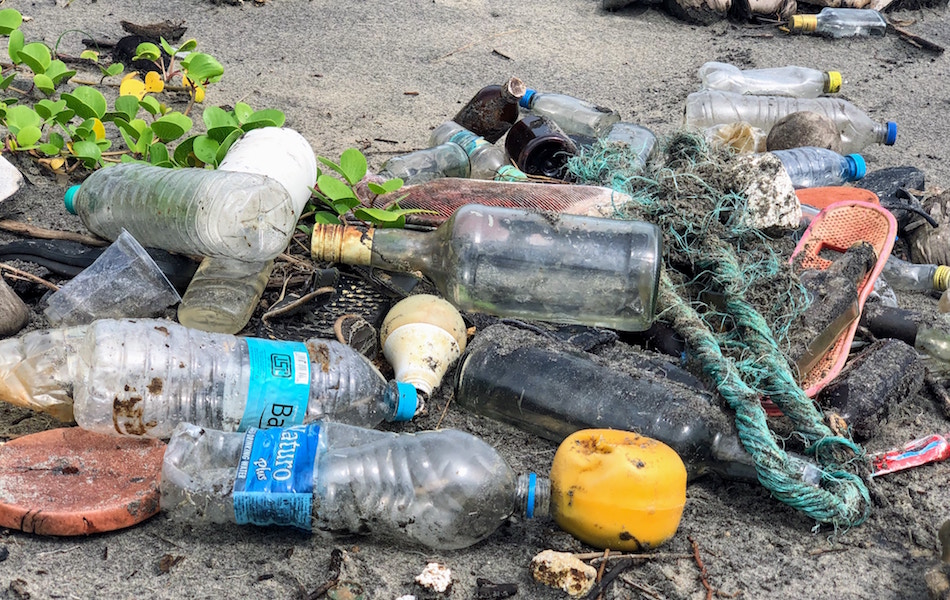Humanity could vanish from the Earth right now, and our legacy would still linger for a thousand years. The world is waking to the reality of anthropogenic climate change, but that’s not the full story when it comes to how we’ve remade this planet in our image . Our obsession with plastic has flooded our environment with millions of tons of plastic waste, and every crevice of the planet is now filled with plastic fragments, small and large.
The problem of microplastics in our ecosystems and food chains is causing increasing alarm in the scientific community, and with stories like the deep-sea diver who found a plastic bag in depths of the Mariana Trench. The time to confront this problem with technology is right now — but what are our options?
Why Are Microplastics Such a Huge Problem?
Humanity produces about 300 million tons of plastic every calendar year, eight million tons of which end up in our oceans. America’s Great Lakes alone are estimated to take-up an alarming 10,000 tons per year. These are the remains of car tires, water bottles, shopping bags, children’s toys, packaging, cosmetics and even fibers from synthetic clothing.
The danger posed by larger, floating pieces of plastic is apparent — wildlife can get easily entangled in these items and drown, or swallow them and choke to death. Viral images of beached whales with plastic spilling from their mouths are now a common sight.
The fragments of plastic that aren’t swallowed whole by wildlife end up battered by the elements until they become tiny particles called “microplastics”. This may not sound like it would be a problem, especially given the particles measure in size from five millimeters to one micrometer, and nanoplastics are anything below 100 nanometers (0.0001 mm). However, they both have a massive influence on natural ecosystems, and even humans.
How Do Microplastics Impact Us?
Scientists don’t fully understand the degree to which microplastics harm living organisms — but there is a consensus that microplastics can enter the body tissues of aquatic animals and humans alike. Humans get a great deal of their food from the water, meaning plastic is now an inescapable part of our own food chain. For example, a 2017 study testing tap water from a dozen countries around the world found that 83% of the samples contained microplastics.
Other microplastic threats include:
- Microplastics and nanoplastics can alter oxygen levels in body cells and cause physical gut blockage.
- When these impairments don’t kill animals outright, they reduce energy levels and feeding and mating behaviors, leading to dangerous population drop-offs in some areas.
- These particles can also absorb, concentrate and carry other chemicals in the environment, known as PBTs, or “persistent, bioaccumulative and toxic” chemicals. This compounds the effect of microplastics on cell and tissue function.
Scientists are working to understand the influence of plastic waste on animal species better, but it’s clear entire food chains and biomes are at risk. The question isn’t whether changes are needed, but how quickly technology can provide solutions.
Technologies for Removing Microplastics From the Environment
One solution for removing microplastics involves a “biological catalyst,” or enzyme, which has demonstrated an ability to greatly reduce the time required to break down some plastics. It’s called “PETase,” after PET plastics, and it essentially “eats” plastic. Scientists found this enzyme in Japan by accident, but refinements to its structure have made it more effective at breaking down plastics than any other known catalyst in nature. However, there isn’t a known way to deploy this molecule to fight plastic already present in nature. The scientists involved in its development anticipate applying it to recycling programs first.
Other scientists are concentrating their efforts on designing and deploying physical structures to gather plastics from waterways near populated areas. Based on computer modeling, researchers believe they could remove about 31% of microplastics from coastal areas by installing collection booms near population centers. Focusing on coastal areas is a priority because they’re richer in marine life than deeper parts of the oceans.
There is another proposal for breaking down microplastics already in the environment from the Swedish Royal Institute of Technology. This one involves a so-called “nanocoating.” When deployed on the surface of plastic, nanocoating helps it degrade using nothing but natural, or artificial, sunlight. This process, called “photocatalysis,” leverages what scientists call “zinc oxide nanorods.” Hopefully, research yields methodology for tackling plastics already present in bodies of water. More immediate applications could include manufacturing plastics with this coating already applied and using it to deploy devices in wastewater plants to destroy microplastics.
Reduce Your Use of Plastic
The microplastic problem is urgent. The first order of business is to reduce our collective use of one-time use plastics, and petroleum-based plastics in general, so they never enter the environment. Groups of scientists all over the world are stepping up and exploring several avenues to help us reduce this part of our influence on Earth. However, we have already filled our environment with plastic, so we must also invest in strategies to clean them from the environment before they do more harm.
Photo by John Cameron on Unsplash




